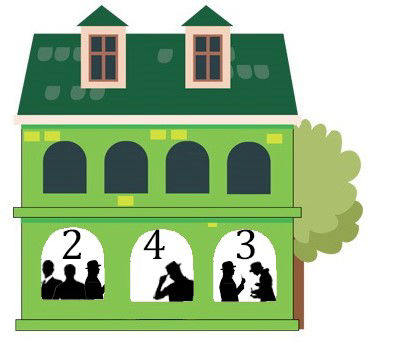Problems
Some real numbers \(a_1, a_2, a_3,\dots ,a _{2022}\) are written in a row. Prove that it is possible to pick one or several adjacent numbers, so that their sum is less than 0.001 away from a whole number.
a) Could an additional \(6\) digits be added to any \(6\)-digit number starting with a \(5\), so that the \(12\)-digit number obtained is a complete square?
b) The same question but for a number starting with a \(1\).
c) Find for each \(n\) the smallest \(k = k (n)\) such that to each \(n\)-digit number you can assign \(k\) more digits so that the resulting \((n + k)\)-digit number is a complete square.
In a regular polygon with \(25\) vertices, all the diagonals are drawn.
Prove that there are no nine diagonals passing through one interior point of the shape.
17 squares are marked on an \(8\times 8\) chessboard. In chess a knight can move horizontally or vertically, one space then two or two spaces then one – eg: two down and one across, or one down and two across. Prove that it is always possible to pick two of these squares so that a knight would need no less than three moves to get from one to the other.
A group of psychologists developed a test, after which each person gets a mark, the number \(Q\), which is the index of his or her mental abilities (the greater \(Q\), the greater the ability). For the country’s rating, the arithmetic mean of the \(Q\) values of all of the inhabitants of this country is taken.
a) A group of citizens of country \(A\) emigrated to country \(B\). Show that both countries could grow in rating.
b) After that, a group of citizens from country \(B\) (including former ex-migrants from \(A\)) emigrated to country \(A\). Is it possible that the ratings of both countries have grown again?
c) A group of citizens from country \(A\) emigrated to country \(B\), and group of citizens from country \(B\) emigrated to country \(C\). As a result, each country’s ratings was higher than the original ones. After that, the direction of migration flows changed to the opposite direction – part of the residents of \(C\) moved to \(B\), and part of the residents of \(B\) migrated to \(A\). It turned out that as a result, the ratings of all three countries increased again (compared to those that were after the first move, but before the second). (This is, in any case, what the news agencies of these countries say). Can this be so (if so, how, if not, why)?
(It is assumed that during the considered time, the number of citizens \(Q\) did not change, no one died and no one was born).
In a row there are 2023 numbers. The first number is 1. It is known that each number, except the first and the last, is equal to the sum of two neighboring ones. Find the last number.
Two players in turn paint the sides of an \(n\)-gon. The first one can paint the side that borders either zero or two colored sides, the second – the side that borders one painted side. The player who can not make a move loses. At what \(n\) can the second player win, no matter how the first player plays?
Welcome back! We hope you all had a great summer and now you are ready for the new school year full of fun problems in mathematics. We decided to start with warm-up topic called dissections, so today we will cut various shapes into more elaborate geometric figures in order to reassemble them into a different shape.
The meeting of the secret agents took place in the green house.

Considering the numbers in the windows of the green house, what
should be drawn in the empty frame?

Today we will practice to encrypt and decipher information using some
of the most common codes. Majority of the codes in use can be alphabetic
and numeric, namely one may want to encode a word, a phrase, or a
number, or just any string of symbols using either letters, or numbers,
or both. Some of the codes, however may use various other symbols to
encrypt the information. To solve some of the problems you will need the
correspondence between alphabet letters and numbers
0.85
@*26c@ A & B & C &
D &E & F &G &H &I &J &K &L
&M&N&O&P&Q&R&S&T&U&V&W&X&Y&Z
1 & 2 &
3&4&5&6&7&8&9&10&11&12&13&14&15&16&17&18&19&20&21&22&23&24&25&26